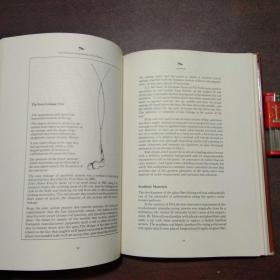Content:
Fly fishing, an ancient sport with a rich history, requires a combination of skill, patience, and precision. One of the most crucial elements in fly fishing is the selection and use of the right float, also known as a fly fishing indicator. In this article, we will delve into the world of floats and provide you with essential tips to help you master the art of fly fishing.
Understand the purpose of a float
Before choosing a float, it's important to understand its primary function. The float serves as an indicator to show when the fly has reached the desired depth and when a fish has taken the bait. It also helps you maintain a consistent line tension, ensuring that your fly remains in the water column where the fish are most likely to be found.
Choose the right type of float
There are various types of floats available, each designed for specific fishing conditions. Here are some common types:
a. Sliding floats: These floats have a sliding device that allows you to adjust the depth of your fly. They are ideal for casting long distances and targeting fish in deep water.
b. Sinker floats: These floats are heavier and designed to sink quickly. They are perfect for fishing in fast currents or for targeting fish that feed near the bottom.
c. Tip-up floats: These floats have a thin, flexible tip that points upwards when the line is taut. They are great for detecting subtle bites and are often used in still waters.
d. Bubble floats: These floats have a hollow center that allows them to float on the surface. They are ideal for fishing nymphs or dry flies in calm waters.
Consider the size and color of the float
The size and color of the float should be chosen based on the fishing conditions and the type of fly you are using. Here are some guidelines:
a. Size: A larger float is easier to see and control, but it can also spook fish. In clear water, use a smaller float to minimize visibility. In murky water, a larger float may be more effective.
b. Color: Natural colors like white, brown, and green are often preferred as they blend in with the surroundings and are less likely to spook fish. However, some anglers use bright colors to attract fish, especially in murky water.
Attach the float properly
Properly attaching the float to your line is crucial for ensuring its functionality. Here's a step-by-step guide:
a. Tie a loop knot at the end of your leader (the section of line between your fly and the float).
b. Thread the end of the leader through the float's hole.

c. Secure the float to the leader with a loop-to-loop knot or a blood knot.
d. Adjust the float's position on the leader by sliding it up or down until it reaches the desired depth.
Practice casting and retrieving
Once you have chosen and attached the float, it's important to practice casting and retrieving. Here are some tips:
a. Keep your casting arm relaxed and use a smooth, overhead casting motion.
b. Pay attention to the angle of your cast, as casting too far or too close can affect the performance of your float.
c. Retrieve your fly in a steady, consistent manner, maintaining a constant line tension.
Adapt to changing conditions
Lastly, be prepared to adapt your float choice and technique as the fishing conditions change. Pay attention to the water flow, visibility, and the behavior of the fish. Adjust your float and approach accordingly to increase your chances of success.
In conclusion, mastering the art of fly fishing involves understanding the purpose and functionality of the float, choosing the right type and color, attaching it properly, and adapting to changing conditions. By following these tips, you'll be well on your way to becoming a skilled fly fisherman. Happy fishing!












